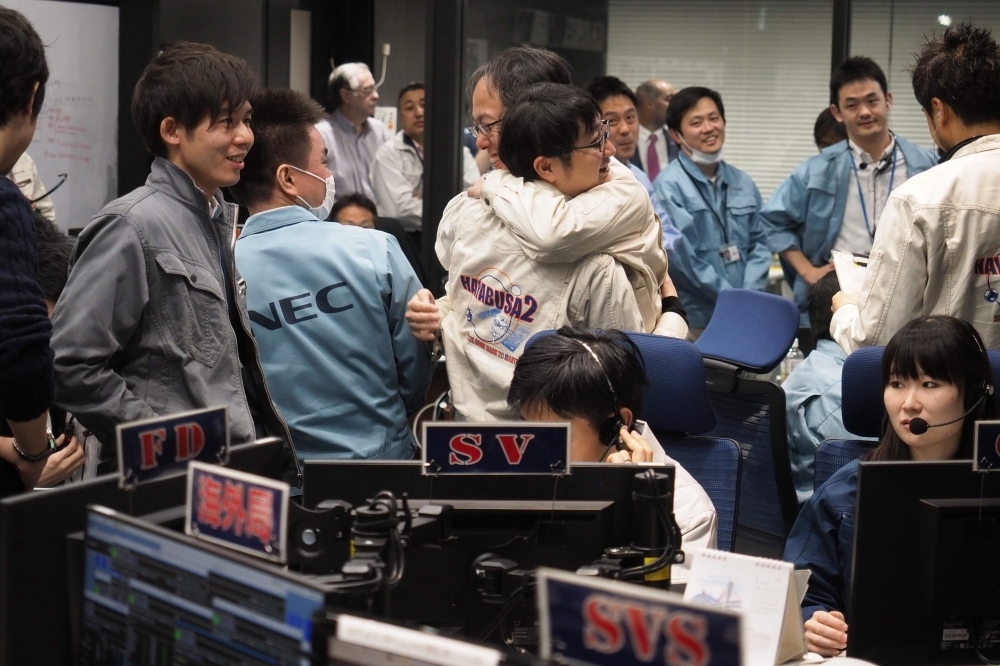
TOKYO — A Japanese probe sent to collect samples from an asteroid 300 million kilometers away for clues about the origin of life and the solar system landed successfully on Friday, scientists said.
Hayabusa2 touched down briefly on the Ryugu asteroid, fired a bullet into the surface to puff up dust for collection and blasted back to its holding position, said officials from the Japan Aerospace Exploration Agency (JAXA).
A live webcast of the control room showed dozens of JAXA staff members nervously monitoring data ahead of the touchdown before exploding into applause after receiving a signal from Hayabusa2 that it had landed.
“We made a successful touchdown, including firing a bullet” into the Ryugu asteroid, Yuichi Tsuda, Hayabusa2 project manager, said.
“We made the ideal touchdown in the best conditions,” he said.
The complicated procedure took less time than expected and appeared to go without a hitch, said Hayabusa2 mission manager Makoto Yoshikawa.
“I’m really relieved now. It felt very long until the moment the touchdown happened,” he said.
He said the firing of the bullet — the first of three planned in this mission — “will lead to a leap, or new discoveries, in planetary science.”
The asteroid is thought to contain relatively large amounts of organic matter and water from some 4.6 billion years ago when the solar system was born.
During a later mission, Hayabusa2 will eventually fire an “impactor” to blast out material from underneath Ryugu’s surface, allowing the collection of “fresh” materials unexposed to millennia of wind and radiation.
Scientists hope those samples may provide answers to some fundamental questions about life and the universe, including whether elements from space helped give rise to life on Earth.
Queen rocker and space fan Brian May tweeted: “Hurrah. Brilliant success in touchdown on Ryugu.”
Communication with Hayabusa2 is cut off at times because its antennas are not always pointed towards Earth and it could take several more days to confirm the bullet was actually fired to allow the collection of samples.
The mission has not been completely plain sailing and the probe’s landing was originally scheduled for last year.
But it was pushed back after surveys found the asteroid’s surface was more rugged than initially thought, forcing JAXA to take more time to find a suitable landing site.
The Hayabusa2 mission, with a price tag of around 30 billion yen ($270 million), was launched in December 2014 and is scheduled to return to Earth with its samples in 2020.
Photos of Ryugu — which means “Dragon Palace” in Japanese and refers to a castle at the bottom of the ocean in an ancient Japanese tale — show an asteroid shaped a bit like a spinning top with a rough surface.
Hayabusa2 observes the surface of the asteroid with its camera and sensing equipment but has also dispatched two tiny MINERVA-II rover robots as well as the French-German robot MASCOT to help surface observation.
Scientists have already received data from these probes deployed on the surface of the asteroid.
At about the size of a large fridge, Hayabusa2 is equipped with solar panels and is the successor to JAXA’s first asteroid explorer, Hayabusa — Japanese for falcon.
That probe returned from a smaller, potato-shaped, asteroid in 2010 with dust samples despite various setbacks during its epic seven-year odyssey and was hailed as a scientific triumph. — AFP